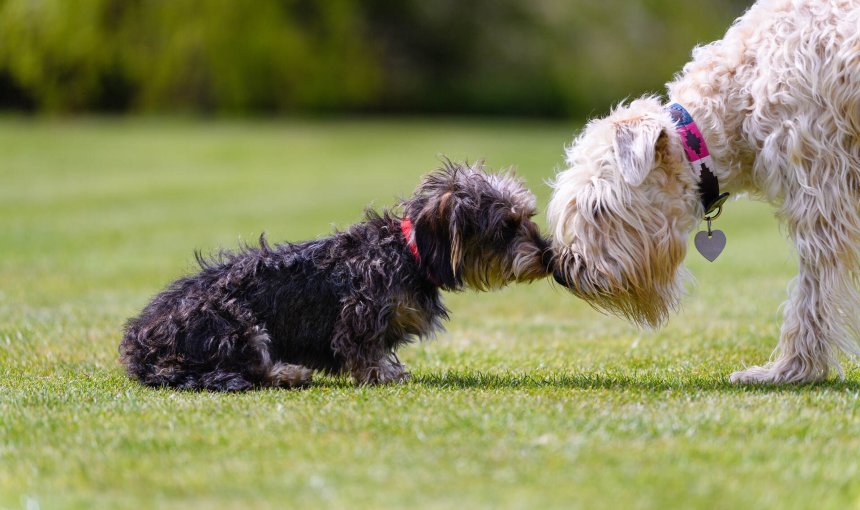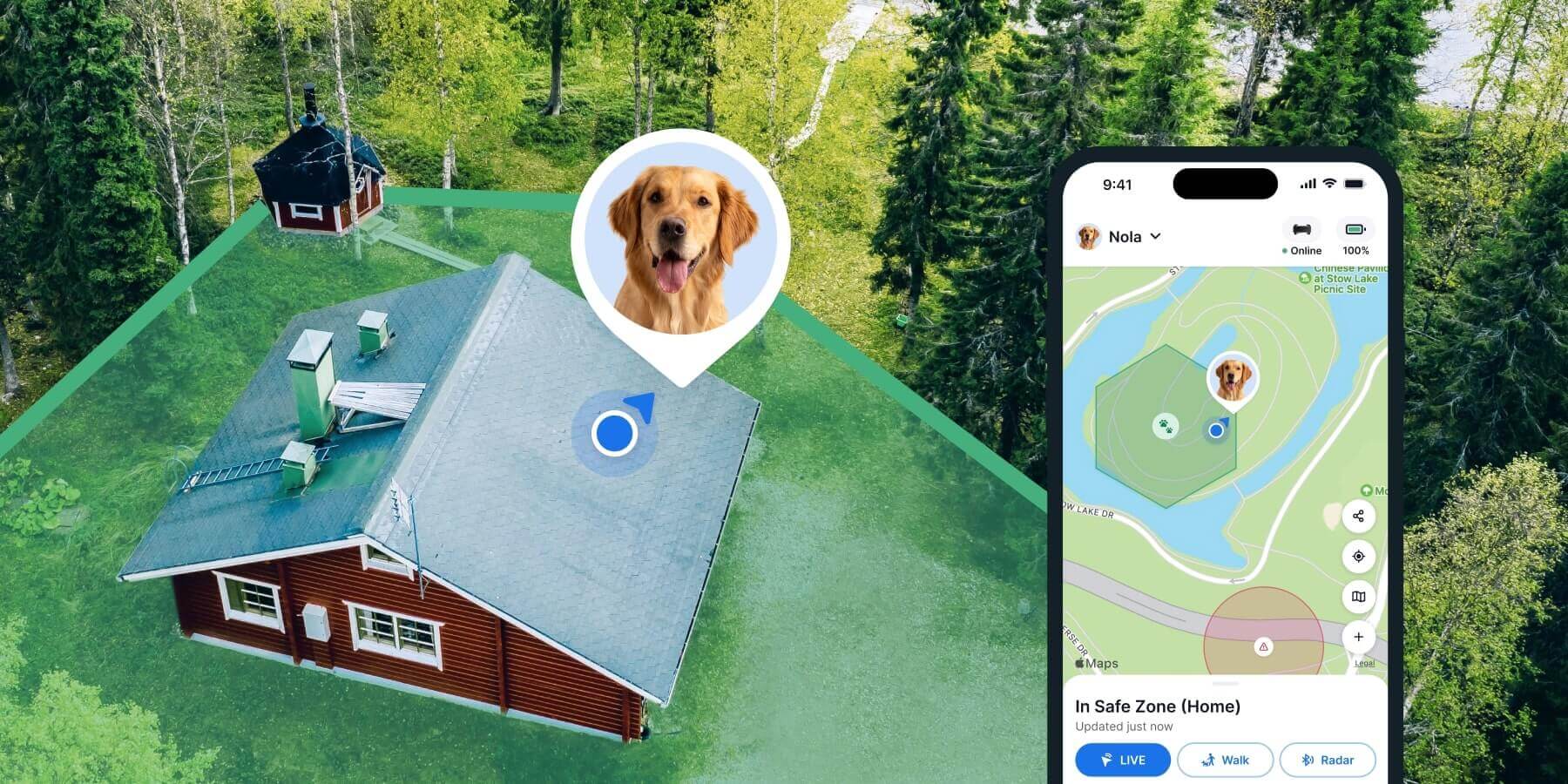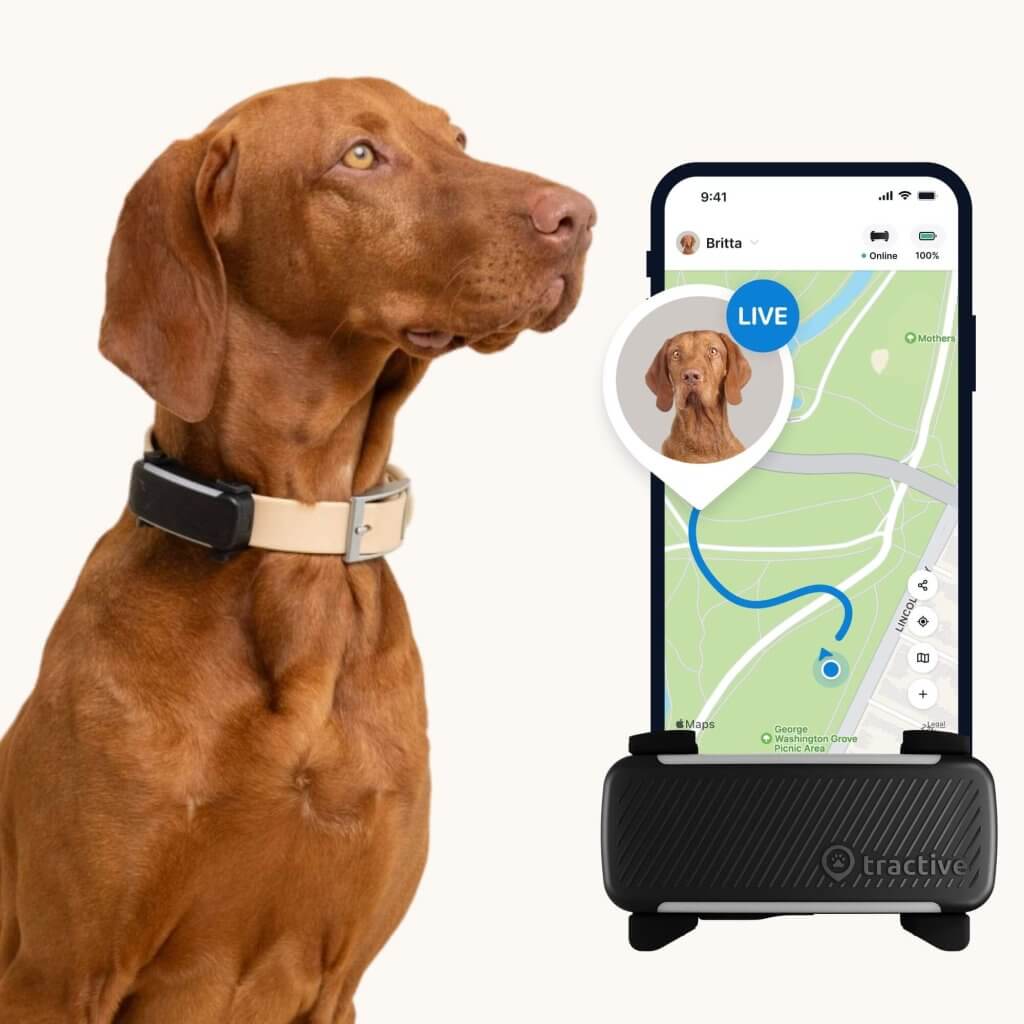Paw-Sitive Beginnings: How To Introduce Dogs To Each Other
Thinking of adding a second (or third) dog to your household? Here's how to introduce dogs to each other, catch on early to any disruptive behaviors & plan ahead for an emergency.

Adopting a dog can be a ton of fun – but how about when you’ve already got dogs at home? You wouldn’t be the first to puzzle over how to introduce dogs to each other and get them off to a paw-sitive start. Here are a couple of tips to prevent your buddies from getting off to a ruff start and on the wrong paw. Let’s go!

Always know your buddy is healthy & safe
Read moreHow to introduce dogs to each other: Simple steps for success
Before you bring your new buddy home, it’s a good idea to introduce your dogs to each other much in advance – and gradually. Because as you check out your local adoption centers, it’s a good idea to pick a dog that’s both:
- A good fit for you and your lifestyle
- A good fit for any other pets you have at home
With these steps, you’ll set them up for success – and for a long, paw-sitive relationship by your side.
Keep these factors in mind when picking your new adoptee
Before adopting, it helps to keep in mind factors like age, size, breed, temperament, activity level, past experiences, and any health issues. (And definitely before bringing your new dog home.) Your shelter staff can help you stay abreast of these details – and your vet can help you address them appropriately.
All of these factors can play a role in your dogs getting along – and how it might go. For example:
- An age gap. This can result in your puppy intruding on your senior dog’s space.
- A highly active new dog might demand more time and energy than a more chill, low-maintenance one. (Or just need more exercise in general.)
- A bigger dog will need more space than a smaller one.
- Some dogs might be more aggressive towards others of the same gender.
- A newly adopted shelter dog that’s experienced mistreatment or even violence in the past might also have separation anxiety. Which can result in all sorts of disruptive behavior. (Including runaway attempts.)
“Dogs do not learn as we do, but there are situations where they can certainly pick up behaviors from other dogs around them – for better or for worse.“
– Gulf Coast K9 Dog Training1
So make sure to work with your shelter and vet to keep these details in mind. Pick a dog you think can fit you, your lifestyle, your capacity, your budget, as well as your other dogs.
Introduce your dogs on “neutral” territory
When you’re bringing in a new pack member, try and arrange the first meeting in an environment that’s not familiar for either of them.2 This might be an area you haven’t gone walking with your home-buddies – and ideally, one your new dog isn’t familiar with either. (Like a friend’s backyard or similar, one where neither dog feels the need to defend their space.) This can help both dogs size each other up on more neutral terms – not as “territory leader” and “stranger” instead. Start slow and get your dogs used to each other bit by bit. This will help them gradually learn that the other isn’t a threat and can be a welcome member of the pack.
Keep both your dogs leashed at first
As your buddies meet and slowly get used to each other, it’s wise to have each dog on leash. Keep the leash loose. If you grip it too tight, it might cause tension on the leash. This can signal to your dogs that you’re worried or afraid. So they might tense up as well – and result in barking or protective behaviors. Rather, get a friend, loved one, or shelter staff to keep your new dog on one leash – while you have the other on another leash.
Keeping your dogs leashed helps you maintain control over the situation. So you can intervene right away if things get tense.
Watch your buddies’ body language as they interact
Watch out for these signs of aggression in dogs, including:
- Yawning, or licking of the lips
- Ears pinned flat against their heads
- Crouching or lowering the body
- Tucking the tail under the body
- Avoiding eye contact by squinting or turning away
- …and the more obvious signs, like growling, snapping, or biting
But if, over a few meetings, your dogs don’t show any signs of hostility towards one another, you could try taking them to an enclosed area, drop their leashes, and let them play around and interact with each other a bit more. So they can get to know each other with a bit more freedom to run around and explore.
Make sure your dogs have met at least 2-3 times
Using the same neutral location, make sure your dogs have met, played, and interacted at least a few times before you bring your new buddy home. You could take them both out on walks – with your dogs walking on the inside and you in between. Playing together can help you get an idea of what behavior to expect once you do bring your new buddy home. (Like if they’re more dominant – or if their behavior triggers any resource-guarding in your dog.)
Stay calm throughout these meetings. Your buddies can pick up on your emotions through small, barely noticeable signs. So you can help them feel more at ease and less likely to get nervous or aggressive. Keep these meetings short and sweet to prevent any overstimulation – and gradually increase their length to get you buddies used to each other. Also, always supervise these meetings. Hover over your dogs at first, but gradually, take a few steps back and supervise from a distance.
You could also reward your dogs for getting along by patting and praising them plenty when they DO behave. (Not just intervening when they don’t behave.) Keep some treats at hand and be consistent when you offer them. So your buddies can slowly learn that “getting along = reward.”
Before you bring your new dog home, be 100% sure that your dogs are comfortable with each other. Rope in the shelter staff to help you understand the difference between dogs getting to know each other. (And what signs to look out for if they don’t seem to be getting along.)
How to introduce dogs once you’ve brought them both home
Establish a “space” for each dog at home
Experts recommend keeping your dogs separated with a tall baby gate.4 (Or some kind of barrier through which they can still interact.) While it might seem counterintuitive, this can actually help your buddies gain a sense of “space” in your home without feeling defensive or threatened by the other. Monitor their interactions through the baby gate or barrier while at home. Make sure to reward your dogs with pets, praise, or treats when you do see them behaving or getting along.
Keep any food, toys, or treats in separate areas, so each dog can get a sense of what’s “theirs” without fighting. Help your new buddy adjust to your home environment by establishing a specific sleeping, feeding, and playtime area. (Ideally, just a little away from your other dogs.)
Play together with your dogs at home – and take a time-out if either one gets a bit too excited. A few minutes in their crate with a chew toy can help calm them down.
Finally, there’s no substitute for regular training, but make sure to train your dogs separately. So each gets to spend some time with you and establish a consistent system of rewards for “good” behaviors. The presence of another dog might be confusing for them, especially in the early stages.
Understand how dogs can influence each other
Dogs are likely to influence other dogs to mimic instinctive behaviors – like barking at passing cars, digging in specific spots…or running off in the same direction.5
“…although it is possible that your better behaved dog may eventually have an effect on your rowdy one, the opposite dynamic is just as likely.
Therefore, you should never bring a new dog into a home until the first dog is well trained and under control – and not likely to fall back into bad behaviors.”
– Gulf Coast K9 Training
This is why it makes sense to invest in one-on-one training for your buddies – and reinforce “good” behaviors consistently, so one is more likely to follow the other. In more difficult scenarios, it also makes sense to enroll your new buddy in an obedience training school. So they can socialize with other dogs and people, learn what’s acceptable behavior (and what isn’t), and help you leave some jobs to the pros.
⚠️ Just remember: certain instinctive behaviors – like chasing or running away – might end up as a result of another dog’s presence. Or, for example:
- Woodland animals, which might trigger a dog’s prey drive
- Farm animals, which might trigger any herding instincts
- Fellow runners or walkers, especially for dogs that have been historically trained as guard dogs
And in specific cases, like if your new adoptee has a more…well, strident personality than your dogs, they might influence them to chase down or run off the same way as them.
Escape proof your home & backyard
Sadly, newly adopted dogs might often be considered “high flight risk” – with anxieties and fears brimming just beneath the surface. All of which can increase their chances of running away at the slightest threat.
Even worse, these signs are often easy to miss. Especially when you’ve adopted a seemingly “jolly” dog whose behavior belies any anxieties or stress.
“...many people are unprepared for the challenges of living with a newly adopted dog who may be shy, fearful, or stressed due to the changes in their lives. We consider these dogs as “high flight risk”. They go missing with alarming frequency from either their new owner or a foster family.
Owners bring home their new dog; and then many of these dogs who are already stressed slip out of their collars, the yard, or the house. By far, the greatest risk to these dogs when they go missing is that they will be hit by a car and killed.“
– Lost Dogs of America6
💡So imagine the relief and peace of mind from knowing you can immediately tell your dog’s escaped – with just a glance at your phone?
With your trusty Tractive device, you can set up a “safe zone” around your backyard – and get an escape alert if your new buddy tries sneaking past it, jumping the fence, or digging under it.

Ensure your new buddy is a familiar face in your neighborhood
So your friends, family members, and neighbors can all keep an eye out for them – especially in case they’re:
- Wandering around looking for new “territory”
- Exploring their new neighborhood – and aren’t 100% familiar with the way home yet
- Venturing a little too close to your neighbors’ backyards for comfort
Taking out your dogs on regular walks can go a long way this way – plus it can also help your new buddy figure out their new environment better, familiarize themselves to it, and also socialize with other dogs and people.
We’d also recommend ensuring your new buddy is easy to identify in case they do end up wandering off somewhere without you noticing. I.e., a collar and dog ID tag at the very minimum – and ideally, also a microchip to help someone identify them and contact you.
⚠️ Just remember: neither a microchip nor an ID tag can help you actively search down a missing dog. They can only help someone identify your buddy if they pick up them outdoors.
Rather, that’s where it makes sense to…
Plan ahead for an emergency – especially when your new adoptee is concerned
All dogs have a chance of running away while out on a walk or left to their own devices – but especially so for newly adopted dogs. So it makes sense to plan ahead for a “runaway dog” situation, much in advance.
Why? Well, let’s hear it from Alex Voenken, founder of Setter Rescue Netherlands and an expert on rehoming dogs to loving forever homes:
“…they might still be prone to anxiety – be it from their past experiences or the stress of a new environment. All of which make them more likely to suddenly run away, despite all the safety measures we take.
Ultimately, even a few seconds of negligence can be enough to make a dog run away.”
And it’s exactly for these moments that the Tractive tracker is the perfect solution to find your dog again as quickly as possible. Especially since the dog does not yet know where their home is during the first period – neither do they know nor trust you as much.“




